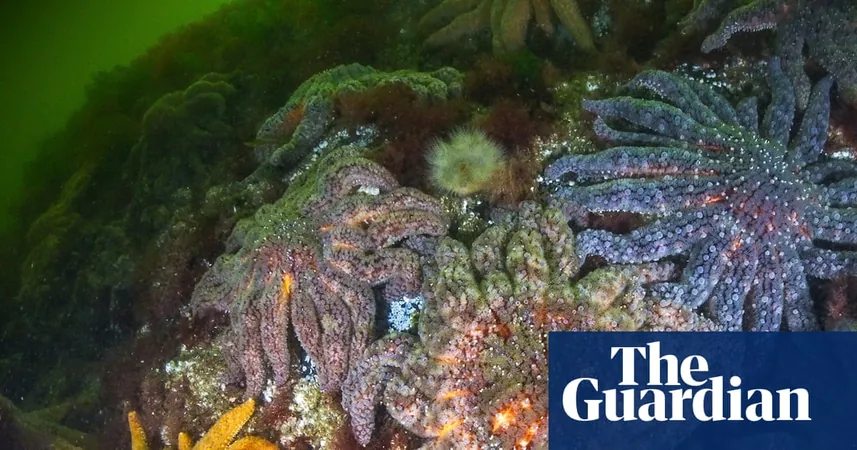
Breakthrough Discovery: Scientists Pinpoint Bacterium Causing Starfish Devastation
2025-08-05
Author: Sophie
The Culprit Behind the Starfish Epidemic Unveiled
In an alarming turn of events, scientists have identified the bacterium responsible for the catastrophic sea star wasting disease (SSWD) that has plagued marine ecosystems for over a decade. The villain? A strain of Vibrio pectenicida, which has wreaked havoc on sunflower sea stars along the North American coast.
Catastrophic Population Decline
Since the onset of this epidemic in 2013, nearly 5.8 billion sunflower sea stars have vanished, translating to a staggering 90% decrease in their global population. This dramatic decline has led the sunflower sea star to be classified as critically endangered by the International Union for Conservation of Nature (IUCN).
Innovative Research Techniques Reveal the Truth
While previous studies attempted to detect Vibrio pectenicida through tissue samples, the results were inconclusive. However, researchers struck gold by analyzing the sea stars' coelomic fluid, akin to blood, confirming the bacterium's prevalence and its deadly role in SSWD.
A Slow and Gruesome Fate
The infection process is as grotesque as it is tragic: it begins with exterior lesions and leads to disfigurement and limb loss, ultimately reducing affected sea stars to a white, mushy paste. Because starfish exhibit similar symptoms in response to various environmental stressors, pinpointing the exact cause of SSWD had previously been a major challenge.
Climate Change Connections
A critical link between rising ocean temperatures and SSWD has emerged, with Vibrio pectenicida thriving in warmer waters. This brings forth serious questions about how changing climates are affecting marine health.
A Collaborative Research Triumph
This vital research was published in the journal Nature Ecology & Evolution, spearheaded by Dr. Melanie Prentice and Dr. Alyssa Gehman from the Hakai Institute in British Columbia. Their efforts form part of a broader, four-year collaboration involving prestigious institutions like the University of British Columbia and the Nature Conservancy.
Wider Ecological Repercussions
The loss of sunflower sea stars extends far beyond just one species—it poses a threat to entire marine ecosystems. As Dr. Prentice pointed out, without these crucial creatures, sea urchin populations tend to skyrocket, which can devastate kelp forests. Kelp plays a vital role in maintaining healthy marine environments, supporting fisheries, and serving as a cultural cornerstone for Indigenous communities.
Hope for Rebuilding Marine Populations
Although the epidemic continues to pose challenges, this breakthrough offers hope for recovery efforts. Scientists are investigating methods like captive breeding of resistant individuals and potential probiotic treatments to help restore affected ecosystems.
The Fight to Save Our Seas Continues
With this new understanding, the battle against SSWD takes a promising turn. As research and conservation efforts ramp up, the future of not just sunflower sea stars, but the health of our oceans, hangs in the balance.









 Brasil (PT)
Brasil (PT)
 Canada (EN)
Canada (EN)
 Chile (ES)
Chile (ES)
 Česko (CS)
Česko (CS)
 대한민국 (KO)
대한민국 (KO)
 España (ES)
España (ES)
 France (FR)
France (FR)
 Hong Kong (EN)
Hong Kong (EN)
 Italia (IT)
Italia (IT)
 日本 (JA)
日本 (JA)
 Magyarország (HU)
Magyarország (HU)
 Norge (NO)
Norge (NO)
 Polska (PL)
Polska (PL)
 Schweiz (DE)
Schweiz (DE)
 Singapore (EN)
Singapore (EN)
 Sverige (SV)
Sverige (SV)
 Suomi (FI)
Suomi (FI)
 Türkiye (TR)
Türkiye (TR)
 الإمارات العربية المتحدة (AR)
الإمارات العربية المتحدة (AR)